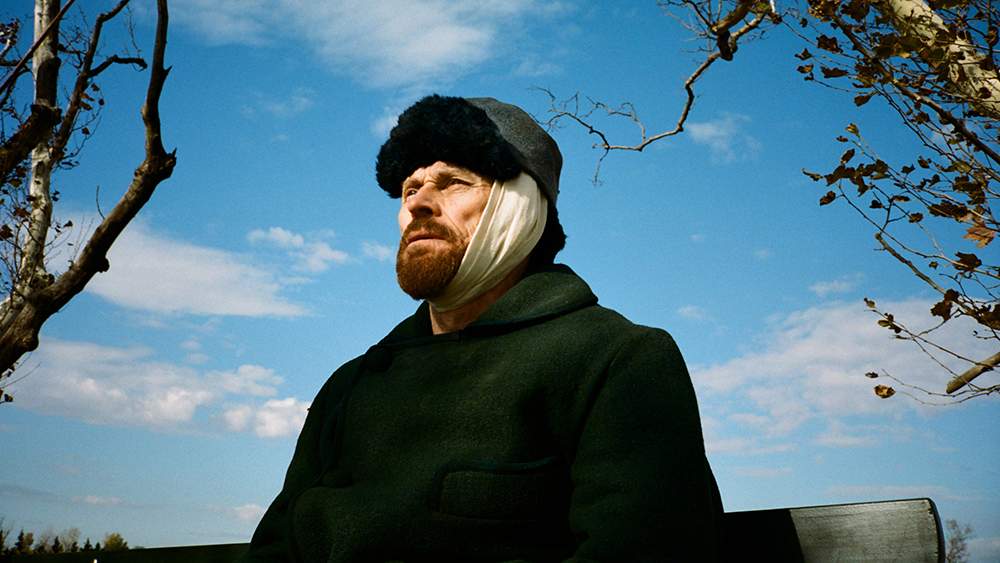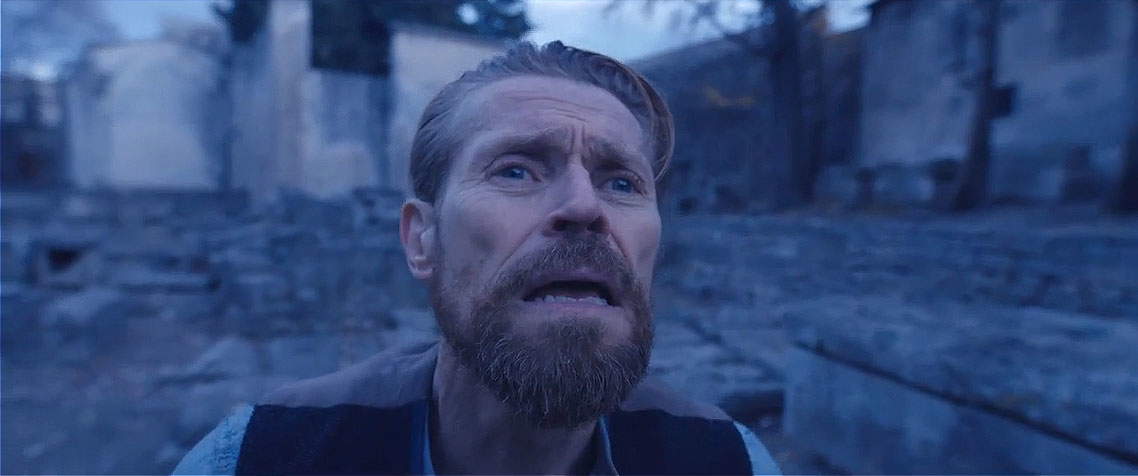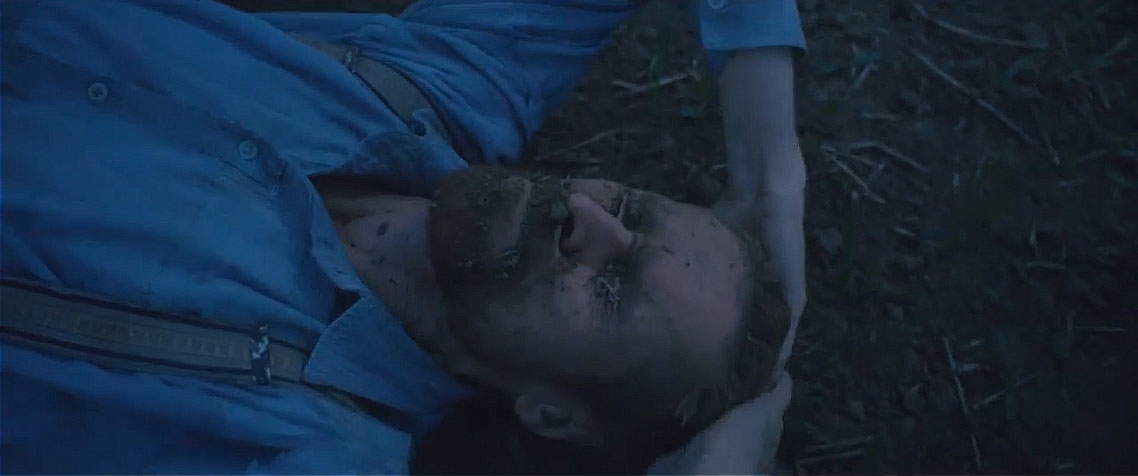"This film is not a biography, but my version of the story. It is a film about painting and a painter and their relationship," said director Julian Schnabel at the 75th Venice Film Festival, where Van Gogh premiered. On the Threshold of Eternity. It is what can be called the event film of the year, critically acclaimed even before its official theatrical release on January 3, 2019.
Julian Schnabel, a director best known for making the film about Basquiat’s short life twenty-two years ago, which became the first commercial feature film about an artist directed by a painter in the history of cinema, since Schnabel himself is a painter. And it is also evident from the approach with which he decided to make the film devoted to Vincent van Gogh (Zundert, 1853 - Auvers-sur-Oise, 1890): not a slavish biography that literally follows the artist’s life and words, because such an intention “would have been absurd,” given the notoriety of the Dutch artist’s life, as stated by Jean-Claude Carrière, who worked on the screenplay in collaboration with Louise Kugelberg and the aforementioned Julian Schnabel. It is a narrative that parallels the biographies and legends featuring van Gogh and the letters that the artist himself wrote during his existence to his brother Theo, with whom he had a visceral relationship, as is well known to all and as is well perceived by Schnabel’s film. The strong passion and dedication that van Gogh had for painting are then analyzed, from the beginning to the end of the film, despite the artist’s various relocations and the illness that affected him. The scenes were therefore built on an obvious basis of reality, but this is, as mentioned, a novel approach to directing and scripting a film about an artist: the viewer will see situations in which van Gogh could have been and hear words he might have said, but of which there is no historical record.
 |
| A frame from the film Van Gogh. On the Threshold of Eternity |
 |
| A frame from the film Van Gogh. On the Threshold of Eternity |
The very title chosen, On the Threshold of Eternity, underscores the artist’s complicated state: A life spent for painting, but encountering various kinds of difficulties, from problems in establishing interpersonal relationships, to the desire to change places and landscapes, to real mockery from other people, to the illness with which the artist struggled in the last years of his life and which would lead to his hospitalization in a psychiatric institution. An existence characterized by toil and passion that will be rewarded only after the artist’s death, when his art will begin to be considered and appreciated. Emblematic is the ending that was conceived by the director and screenwriters, in which this “threshold of eternity” is well stated from an artistic and biographical point of view, but we will not add anything else so as not to anticipate the conclusion.
And as Schnabel himself stated, the fact that a painter was behind the camera allowed us to see van Gogh from a more intimate point of view than in other more strictly biographical films: it allowed us to understand the extraordinary inner strength, despite the presence of other weaknesses, of the artist. An endless dialogue between the latter and art.
The excellent skill of those behind the scenes during the film’s shooting is accompanied by equally extraordinary acting by the actors involved. In fact, Willem Dafoe ’s performance as Van Gogh is masterful: the actor is famous for having collaborated with most of the greatest directors of modern cinema and for having participated in numerous Hollywood projects and productions; he has also earned three Oscar nomin ations for best supporting actor and Golden Globe nominations, as well as having received many film awards. For his van Gogh, he was awarded the Coppa Volpi for Best Actor at the 75th Venice Film Festival and is a 2019 Golden Globe nominee for Best Actor in a Motion Picture Drama. Dafoe was strongly wanted by Schnabel for this role because his physicality, imagination, and curiosity in delving into the character to be played seemed perfect. And in fact, watching the film, one gets the very impression of standing in front of van Gogh himself, so well suited is that role for the actor. One also wonders if Dafoe really painted the pictures that one sees being made throughout the film: and yes, the actor had to take painting lessons from the director, as the latter intended to bring something concrete and emotional to life on the screen, a feeling that would have been distinctly different if instead of really painting, Dafoe had simply imitated the movements of the brush on the canvas.
 |
| A frame from the film Van Gogh. On the Threshold of Eternity |
 |
| A frame from the film Van Gogh. On theThreshold of Eternity |
The superlative cast also includes Rupert Friend as Theo Van Gogh, the artist’s brother, Oscar Isaac who plays Paul Gauguin, as well as Mathieu Amalric, Emmanuelle Seigner, Stella Schnabel, Mads Mikkelsen, Anne Consigny, Amira Casar, Vincent Perez, Lolita Chammah, Vladimir Consigny and Didier Jarre. The film focuses on the last years of van Gogh’s life, namely from 1888 to 1890, the year of his untimely death at the age of only thirty-seven. In fact, the film takes its starting point from the artist’s decision to leave the cold and rainy climate of Paris, the city to which he had moved since February 1886 and where he lived with his brother Theo, and move to the southern part of France, to Provence: the artist was looking for a new light. Here, he would be able to make luminous paintings, painted in sunlight, and he would depict the endless nature that characterized those places.
Nature was one of the most significant aspects of the artist’s life: the town that had given him birth, Zundert, was at the time an uncultivated expanse of marshes and moorland, a rural hamlet where the main activity was agriculture, and it was these naturalistic elements that van Gogh also sought in his travels, as they reminded him of his origins and childhood. Upon arriving in Paris, he had settled with his brother in Montmartre, an area of the city where there were small plots of land planted with vegetable gardens that made the artist feel a certain air of home. However, contrary to expectation, when he arrived in Provence, Arles, he had found a harsh winter with copious snow, but the beginning of spring had changed the landscape entirely: the blossoming orchards and vast fields of wheat had awakened in van Gogh that long-awaited connection with nature. He took long walks through the fields, among the wheat that caressed his face: he went in search of vantage points to stop and paint directly on the canvas, harnessed in his straw hat, scruffy clothes and on his back his painting equipment; in addition to his easel, he also carried a perspective frame. Significant in the film is the scene in which after walking tirelessly through the yellow fields of wheat, with a smile on his face and his arms outstretched to absorb all that nature, he lays down on the earth and smears his face with it-a way of fully feeling his contact with the earth.
 |
| A frame from the film Van Gogh. On the threshold of eternity |
 |
| A frame from the film Van Gogh. On the threshold of eternity |
 |
| A frame from the film Van Gogh. On the Threshold of Eternity |
Because of his attitudes and his rather strange appearance to the people of that part of France, van Gogh is often mocked and taunted (in one scene even by a class of schoolchildren with their teacher), and the artist’s reactions appear to be not entirely controlled, bordering on insanity. These are reactions that will lead to his confinement in a mental institution in Saint-Rémy-en-Provence. The one who rushes to comfort him, as indeed he did throughout his entire existence, is his brother Theo, four years younger than the artist and a key figure for the latter: in addition to having a very deep and protective relationship, he is among the few people to encourage his art. Indeed, famous are his letters to Theo, from which it is perceived that the latter is a true reference point for his brother. Very intense is the scene in the film in which Theo arrives at the psychiatric hospital where Vincent is hospitalized, lies down beside him in bed and holds him to himself in an extremely gentle and protective manner.
Another important figure in his life is that of Paul Gauguin (Paris, 1848 - Hiva Oa, 1903), an artist who had allowed himself to be persuaded by Vincent, thanks in part to Theo’s contribution, to join him in Arles: in fact, Theo will pay Gauguin 25 francs a month as long as he stays beside Vincent in exchange for a monthly painting. Gauguin finally arrives in October 1888 and the two artists share spaces in the famous Yellow House in Place Lamartine. Their way of painting is different as Gauguin resorts to memories and imagination, while Van Gogh starts from real models.
In dialogues between the two, this different approach and their different technique are discussed. A scene in the film in which Van Gogh and Gauguin walk among the trees is devoted to this very dispute. “Why do you always have to paint nature?” asks Gauguin to his friend, and the other replies, “I feel lost if I have nothing to look at. I need something to see, there is so much to see,” van Gogh retorts. “But what you paint, what you do belongs to you. You don’t have to copy anything,” retorts Gauguin. “I don’t copy. The essence of nature is beauty. When I look at nature, I see clearly that bond that unites us all. A pulsating energy that speaks with the voice of God,” Van Gogh says, adding, "I don’t invent the painting, I don’t need to invent it, I find it within nature, I just need to release it. I need to go outside and work to forget myself. I want to lose control, I need to feel myself in a feverish state. The faster I paint, the better I feel [...] Paintings have to be done in one sharp gesture. The painters I admire, Frans Hals, Goya, Velázquez, Veronese, Delacroix, they all painted quickly, with a sharp gesture with every stroke of the brush."
Different is the approach of Gauguin who, after asking Van Gogh why he does not paint what is in his mind, what the brain sees, says, “Before long painters will no longer have to look at models, sit and observe nature, because nature is what we see here, in our heads, nothing else. Without our eyes there is no nature and no one sees the world in the same way. People will be remembered for how you painted them, not what they are. We have to reverse the relationship between painting and what you call nature; between painting and reality because a painted reality is a reality in itself. [...] It looks like you have passed a layer of clay over the canvas. It is more like a sculpture than a painting. Listen to me, you have to look inside.” Vincent’s difficult character, however, leads Gauguin to return to Paris: they are too incompatible in character. To this decision, Van Gogh reacts by cutting off an ear to give it as a gift to his friend and convince him to stay with him. A madman’s reaction.
However, even during his subsequent treatment period, he will never stop painting: painting is a kind of therapy for him. Therefore, the years on which the film focuses are the richest ones from a cinematic point of view. A succession of scenes laden with pathos induces the viewer not to lose the thread of the narrative throughout the film. It is adramatic and movingcinematic work that looks at theartist’s interiority. Perhaps, what is most striking is the juxtaposition created between van Gogh’s frailties from the human point of view and the great strength of the artist himself in pursuing his art with dedication and passion despite adversity. And I think that is what the director fully desired to convey to his audience. "I think only of my relationship with eternity. My gift to the world is my painting," declares the artist almost at the end of his life. A prediction that actually became reality.
Warning: the translation into English of the original Italian article was created using automatic tools. We undertake to review all articles, but we do not guarantee the total absence of inaccuracies in the translation due to the program. You can find the original by clicking on the ITA button. If you find any mistake,please contact us.